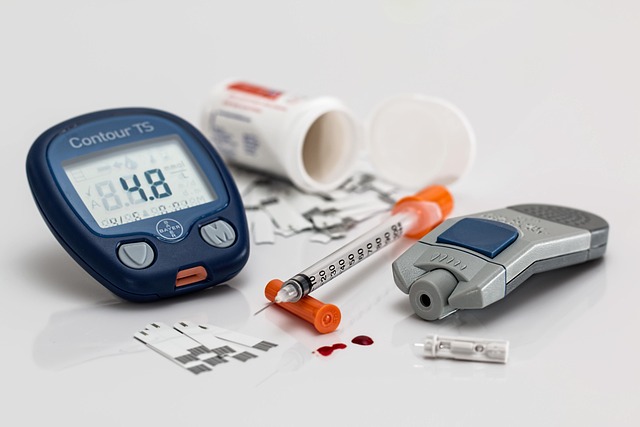Myelodysplastic Syndrome: Silent Signals You Shouldn’t Ignore
Could your body be revealing signs of a serious blood disorder without your awareness? Myelodysplastic syndrome (MDS) can develop quietly, with subtle signals that are easy to miss. In this article, we highlight the warning signs you shouldn’t overlook and explain why noticing them early can help you take informed steps toward better health.

Myelodysplastic Syndrome (MDS) represents a group of disorders characterized by ineffective blood cell production. The bone marrow, responsible for creating healthy blood cells, begins to malfunction, producing abnormal cells that fail to mature properly. These abnormal cells crowd out healthy cells, leading to various health complications that can significantly impact quality of life. While MDS can remain stable for years in some patients, in others, it may rapidly progress to acute myeloid leukemia (AML), making awareness of its early signs vital for timely intervention.
What is Myelodysplastic Syndrome and Who is at Risk?
Myelodysplastic Syndrome occurs when something disrupts the bone marrow’s normal production of blood cells. Instead of developing into healthy red blood cells, white blood cells, and platelets, the blood stem cells in the bone marrow become dysfunctional, resulting in fewer healthy blood cells circulating throughout the body.
Age stands as the most significant risk factor, with most cases diagnosed in people over 60. Men face a slightly higher risk than women. Other risk factors include previous cancer treatments (particularly chemotherapy and radiation), exposure to certain chemicals like benzene, tobacco smoke, and heavy metals. Some inherited genetic conditions such as Fanconi anemia, Shwachman-Diamond syndrome, and Diamond-Blackfan anemia can also increase susceptibility. Additionally, individuals with a history of certain blood disorders may have an elevated risk of developing MDS.
What Are the Early Warning Signs of MDS?
The initial symptoms of MDS often stem from low blood cell counts and can be subtle and nonspecific. Fatigue and weakness are typically the first noticeable signs, resulting from anemia (low red blood cell count). Patients may experience shortness of breath, especially during physical activity, and may appear pale. Frequent infections that seem difficult to overcome point to a compromised immune system due to low white blood cell counts.
Easy bruising or bleeding, including nosebleeds, bleeding gums, or prolonged bleeding from minor cuts, may indicate low platelet counts. Some patients report skin rashes or petechiae (small red or purple spots on the skin). Less commonly, individuals might experience unexplained weight loss, loss of appetite, or bone pain. As the disease progresses, these symptoms typically worsen and become more noticeable, interfering with daily activities and quality of life.
Why Do These Symptoms Often Go Unnoticed?
MDS symptoms frequently remain undetected because they develop gradually and mimic common age-related changes or other less serious conditions. Fatigue, for instance, is often attributed to aging, stress, or busy lifestyles rather than being recognized as a potential sign of a blood disorder. Many symptoms overlap with those of anemia, vitamin deficiencies, or other common ailments, leading both patients and healthcare providers to pursue more routine explanations first.
The intermittent nature of some symptoms can further complicate recognition. Patients might experience good days and bad days, making it difficult to establish a clear pattern of decline. Additionally, many people, particularly older adults, may unconsciously adapt to gradually decreasing energy levels and increasing limitations, accepting them as a normal part of aging rather than symptoms requiring medical attention.
How Does MDS Affect Your Body’s Blood Production?
In healthy individuals, bone marrow produces stem cells that develop into three types of blood cells: red blood cells (carrying oxygen), white blood cells (fighting infection), and platelets (helping blood clot). In MDS, genetic mutations cause these stem cells to develop abnormally, leading to dysfunctional blood cells that either die in the bone marrow or shortly after entering the bloodstream.
This disruption creates a domino effect throughout the body. Low red blood cell counts (anemia) reduce oxygen delivery to tissues, causing fatigue and weakness. Insufficient white blood cells (neutropenia) compromise the immune system, increasing susceptibility to infections. Reduced platelets (thrombocytopenia) impair blood clotting, leading to easy bruising and bleeding. Over time, the bone marrow may fill with blast cells (immature blood cells), further reducing the production of healthy cells and potentially progressing to acute myeloid leukemia in approximately 30% of cases.
When Should You Seek Medical Attention?
Medical evaluation is warranted if you experience persistent fatigue that doesn’t improve with rest, unusual bleeding or bruising, frequent or severe infections, or shortness of breath during normal activities. These symptoms become particularly concerning if they represent a change from your normal state of health or if they progressively worsen over time.
Individuals with known risk factors for MDS—such as previous cancer treatment, exposure to certain chemicals, or a family history of blood disorders—should be especially vigilant about potential symptoms. Regular check-ups that include complete blood counts can help detect abnormalities before symptoms become severe. Early diagnosis allows for more effective management strategies and potentially slows disease progression.
If MDS is suspected, your doctor will likely order blood tests to check cell counts and examine cell appearance. A bone marrow biopsy, which involves removing a small sample of bone marrow for laboratory analysis, is usually necessary to confirm the diagnosis and determine the specific type of MDS. Genetic testing of bone marrow cells helps identify chromosomal abnormalities and mutations that can influence treatment decisions and prognosis.
This article is for informational purposes only and should not be considered medical advice. Please consult a qualified healthcare professional for personalized guidance and treatment.




